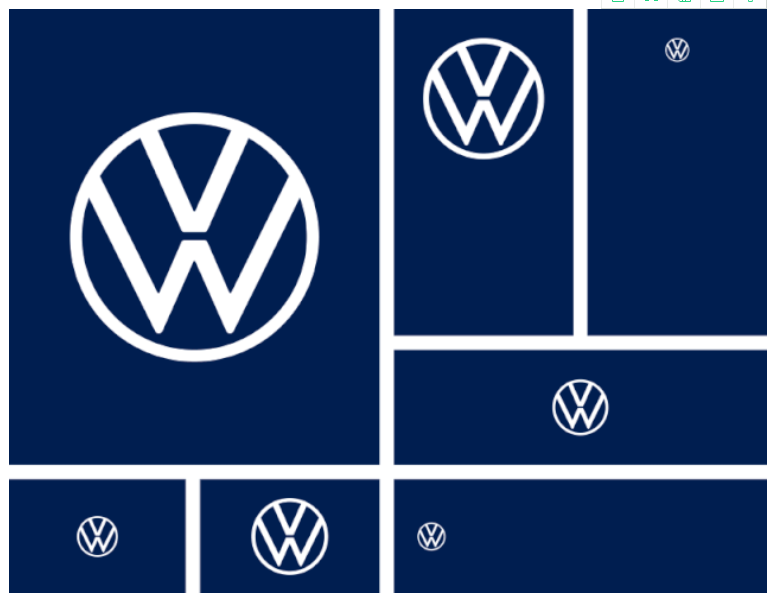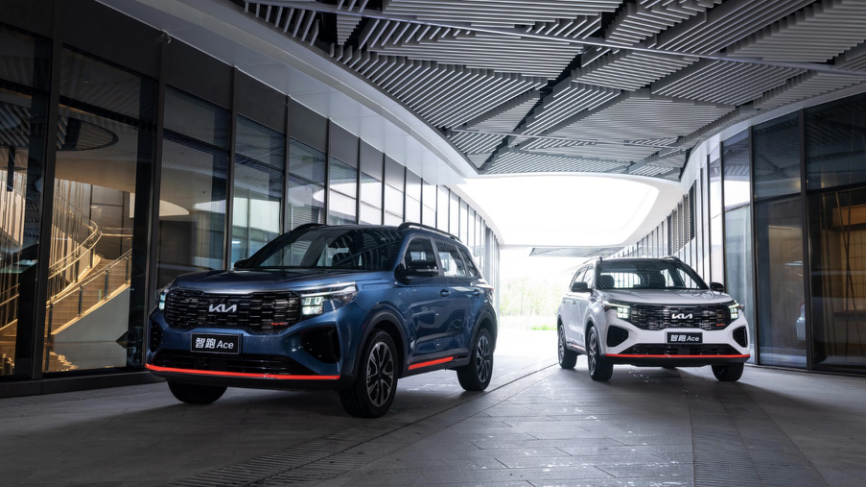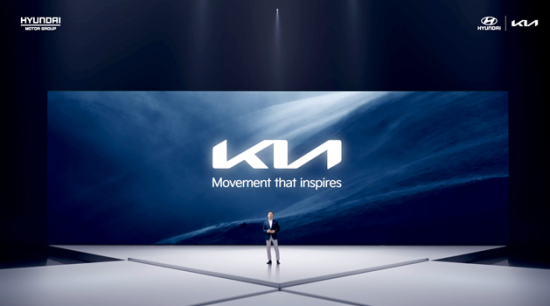This article is reproduced from the autocarweekly WeChat Official Account.
Author: Ling Hu Chong
The word “Ace” originally came from the rating of French fighter pilots during World War I.
As long as you fly up, shoot down the other five planes, and fly back alive, you will be called “Ace”, which is the top gun in everyone’s eyes and the king of shot down.
Now Kia has put this word on its own flagship product.
From now on, the KIA KX3 will be renamed KX3 Ace, and the logo will no longer be an ellipse with English letters, but a more mysterious and artistic borderless logo.
#
KX3 Ace is the first model in China to use the new KIA logo since KIA announced its “NEW KIA” strategy. Looking at its sales data of 1543 vehicles in April, it’s hard to imagine that it used to be KIA’s flagship SUV product.
More than ten years ago, when the main factories attached importance to the sedan market and ignored the sales of SUVs, KX3 has steadily provided KIA with monthly sales of over 5,000 units. Even after 17 years of the Korean car industry’s ups and downs, it still occasionally hits over 10,000 units of monthly sales.
Of course, in the current SUV sales ranking list, its former performance seems somewhat insignificant compared to the leading models like Haval H6 and Honda CR-V, and it can barely rank in the top 20 with monthly sales breaking 10,000 units. But that was in the “ancient times” when SUVs were ignored by main factories and sedans dominated the Chinese market. KX3 has made outstanding contributions to KIA’s market development with its hot sales at that time. Now being named as Ace represents both its history as KIA’s flagship product and the expectation of KIA to gain a second breakthrough in the SUV field.
It can be said that this is KIA’s “trump card” this year.
#
KIA’s new logo was released in January 2021.
It is said that this logo took two years to design, and its cost is unknown.
My first reaction was whether Lee Kwang-guk, the CEO of Hyundai Motor Group (China), had made the same “mistake” as Lei Jun, the CEO of Xiaomi, and was “scammed” as well?
Xiaomi spent RMB 2 million to change its squared logo to the rounded one, while KIA completely changed its logo. The KIA English letter abbreviation from 3D to flat, and from figurative to abstract, which conforms to the three design concepts of “Symmetry”, “Rhythm”, and “Rising”, making it more modern and trendy, but also more difficult to identify.
It looks a bit like “KN”.
Kia Motors CEO Ho-sung Song said that “Changing our company name and logo is not just for beautification, it represents our expanded vision, establishing new businesses to meet and exceed the diverse needs of our global customers.”
Originally, the rumor was that this new logo would be first used on the electrified models of Kia in China, but unexpectedly, the Sportage was the first to adopt it.
Exciting? Not really. My heart is calm, just because there have been numerous rebranding of brands recently.

The new Volkswagen logo that directly combines the letters “V” and “W” with the white circular border has become the most recognizable element on the front of the ID.4. Nissan has also updated their logo with 20 LED light sources within the emblem and presented via a more simplistic black and white design. BMW retains their classic blue sky and white clouds, hoping to break the distance between the brand and users with a transparent circular design…
From relief texture, to flat design, it is the trend now. Of course, the unified statement of the companies is that it is conducive to reshaping the corporate image and catering to the preferences of mainstream young consumers with a more youthful design.
And the deeper reason is sales.
#
Do you think that the automakers spent a lot of money, time, and went through numerous reviews and approvals to change the logo to please their leaders and facilitate propaganda? They did it to survive.
Aesthetics of an IP can change.
I bought two very cute Mickey Mouse and Donald Duck cups for my niece at Disney, and she liked them, but she soulfully asked me, “Why didn’t you buy Elsa?”
In the past, those born in the 1980s thought that Mickey Mouse and Donald Duck were the best and most profitable IPs of Disney. In fact, those born in the 1990s and 2000s prefer the cash cow F4, Daffy, and Friends – Shirley May, Geladony, and Xingdailu. Despite being costly, their sales are enormous, and those born in the 2010s are also hardcore fans of Frozen.
Later, I realized that when I took my niece to Disney, she did not even bother to take a photo with Snow White.
In the auto industry, if a model that needs to capture a specific market segment fails to attract those born in the 1980s, it is highly probable that those born in the 1990s will not like it either.
And the models and brands that those born in the 1980s like may not be liked by those born in the 1990s either.
 In the promotion of automakers, they often say “meet the inner desire for control” and “cater to the passionate DNA,” but the understanding of driving by those born in the 1980s and 1990s is probably different.
In the promotion of automakers, they often say “meet the inner desire for control” and “cater to the passionate DNA,” but the understanding of driving by those born in the 1980s and 1990s is probably different.
One represents the stock market, and the other represents the growing market full of potential. How to choose the focus of promotion is an easy decision.
They say that the Coca-Cola logo is actually the most valuable logo, but they spend nearly 10% of their revenue budget on advertising each year and have been continually adjusting the logo throughout their over 100 years of history to avoid slow aging and being forgotten by consumers.
Continually occupying the top position in the minds of consumers through exposure, and through catering to the needs of each generation of growing consumers, a new cycle of brand building can be achieved to prevent being forgotten by consumers.
Regardless of whether it can become a hot product, attitude is always the top priority.
The younger generation probably does not remember the glory of the ix35 itself, let alone remember the compact SUV, which is known for having many variations.
Middle-aged people often buy CR-V and Haval, while young people prefer the XR-V and Vezel in the small SUV segment. When this generation of ix35 was launched in 2018, it was priced at 119,900 to 139,900 yuan, essentially competing with the small SUV segment with a compact SUV body.
However, the past hits such as HOT, “Blue life and death love”, and “My Savage Girlfriend” are now in the past. The last time a Korean drama reached a phenomenon level was in 2013 with “You From the Stars.” The decline of Korean culture in the Chinese market is obvious, which also affects the sales of the brand.
Certainly, Korean cars are not currently selling well in China, but this is not closely related to product strength. The Ward’s Top Ten Engine award-winning engine is good, isn’t it? The problem is with the brand’s added value.
Kia Hyundai will have two powertrain versions for the new Tucson, the 2.0L engine version will be the same as the current model, and the 1.5T version will be equipped with the Smartstream power system that uses the world’s first fourth-generation CVVD engine technology, which experts have called the “biggest technological advancement in the automotive engine field in the past 30 years.”
However, this cannot hide the Korean brand’s lack of awareness in marketing and promotion – it may be powerful, but consumers cannot see it, nor do they have the willingness to look up at it.It is true that compared with Japanese, American, or German brands, Korean brands seem to lack a very prominent, unique concept, resulting in a fuzzy perception and making them seem interchangeable. Even in the age of the Korean wave invading the Chinese cultural market, the evaluation of Korean cars is no more than good-looking appearance and exquisite interior design.
Therefore, I always feel that Korean cars need a core that can make a difference to change consumers’ perception of them and achieve a breakthrough in sales. Now is the best time because the old methods for the post-80s generation are gradually declining, and the tastes of the post-90s and post-95s generations are becoming mainstream. Everything is starting from scratch, and Volkswagen plays with electric vehicles, Lexus seeks novelty, and Mercedes-Benz considers technological future.
This is an era of reshuffling. I think this is what Kia and Hyundai need to pay more attention to, how to enter the young Chinese consumer market instead of just changing the logo and introducing Ward’s Ten Best Engines.
This article is a translation by ChatGPT of a Chinese report from 42HOW. If you have any questions about it, please email bd@42how.com.
